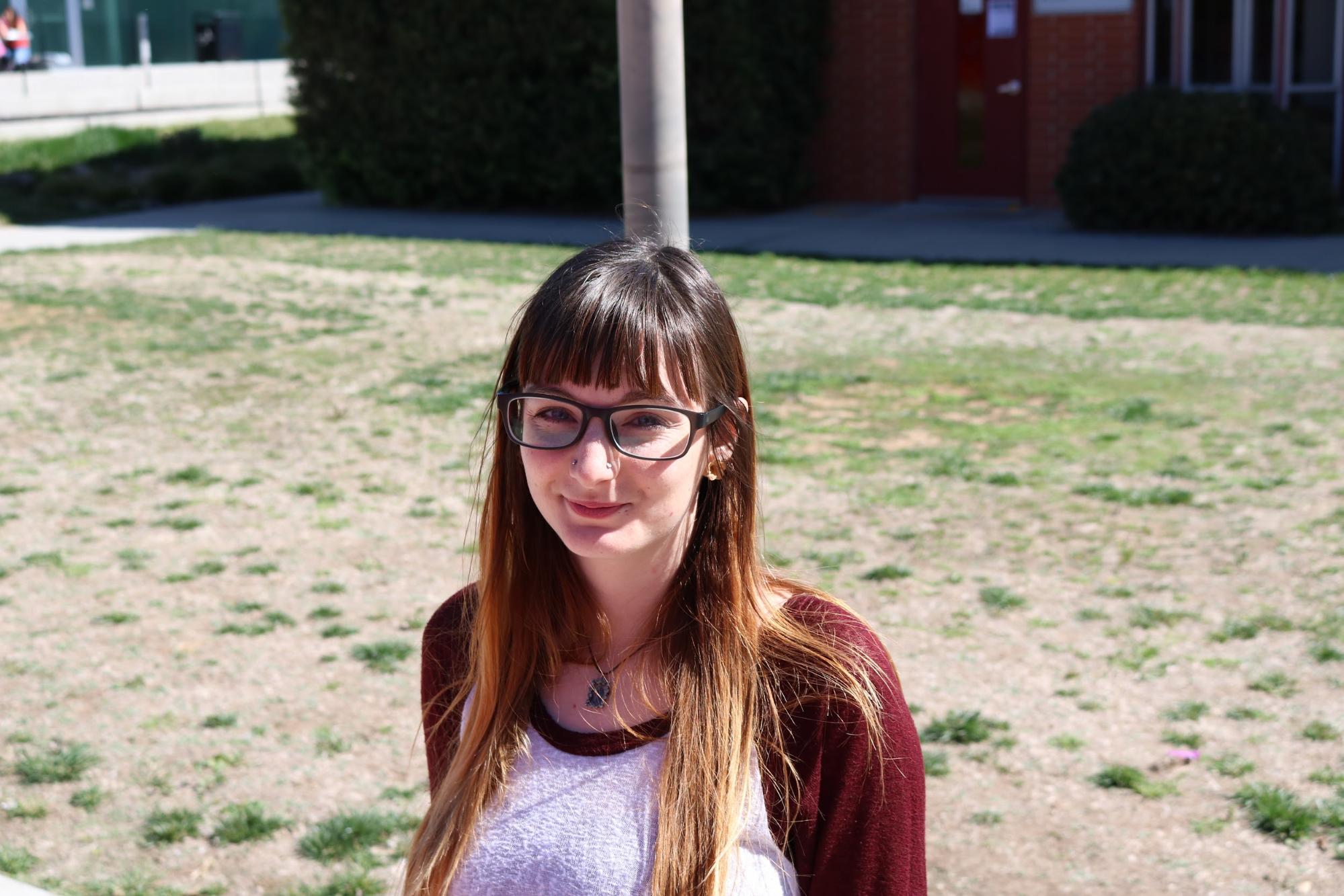Barbara Thorson (played by Madison Wolfe) is not just any teenager living in New Jersey: According to her, she has singlehandedly saved her small town countless times from giants. From the producers of the “Harry Potter” series, “I Kill Giants” is a fantasy movie about one girl’s fight with her own worst fears and the creatures threatening her coastal hometown.
The story follows the plight of Barbara. She is introduced to the audience collecting ingredients, in this case fungi spores and gummy bears, to concoct an ooze used to lure in her cumbersome prey. The tenacious teenager uses in her expert knowledge of “Dungeons and Dragons” to strategically place traps around her town as its sole protector from giants.
This tiny warrior is, however, a formidable heroine equipped with her glitter decorated sheath, which houses her mythical weapon “Covaleski.” Barbara ventures out into the blue, grey wilderness dawning bunny ears — her spirit animal — and peering through her thick rimmed glasses for signs of imminent giant invasion.
She compulsively checks all the traps she sets within her home, school, hotspots in town and, of course, her beloved beach lair. Then, one day, after spending years as a loner, Barbara is approached by the new girl from Leeds, England, Sophia (Sydney Wade), as she methodically modifies the effectiveness of a particular trap.
Sophia, in an unfamiliar country, attributes Barbara’s behavior to her Americanized upbringing. Little does Sophia know that Barbara’s unkempt appearance is not just the latest American trend but a result of her unhinged home life.

With her parents absent for reasons that are realized later in the movie, Barbara’s sister Karen (Imogen Poots) is desperately trying to wrestle domestic obligations to provide for their family, while her older brother shirks all responsibility by mindlessly playing video games. Despite Karen’s attempts to bond with her sister, Barbara’s self-appointed profession proves victorious in keeping anyone who tries to get close to her at bay.
Having completely ostracized herself from any of her peers, Barbara’s misunderstood and secretive mannerisms paint an enormous target for bullies and a school counselor intent on exposing her emotions. Mrs. Mollé (Zoe Saldana) is eager to deconstruct the psychological walls Barbara has fortified to protect herself.
Madison Wolfe’s performance of an awkward tween resonates familiarity in her portrayal of Barbara. Whether you can personally relate to being the outcast or knew someone who shared a likeness to Barbara, Wolfe’s acting is endearing to a multitude of audiences. Wolfe captures adolescent anguish while painting a believable interpretation of her “profession” as a giant slayer. Wolfe balances charisma and fragility in her scintillating adaptation of Barbara.
While Poots and Saldana added their names to this feature, their secondary performances are clearly outshined by the up and coming Madison Wolfe. This female dominated cast passes the Bechdel test with flying colors 10 times over. The only male actor is a peripheral presence played by Barbara’s older brother.
The virtually all-female cast is noteworthy because it demonstrates the fortitude and resilience women possess compared to men. It teaches young girls that they have the capacity to fight their own battles. These women role models send a ripple effect through the audience that your size or gender have no bearing on your strength.
From an art direction standpoint, “I Kill Giants” is stunning. From capturing secret hideouts on the coast of the American northeast to placing a wallowing giant giving chase through the woods, each frame is picturesque. The scenes of bullying are uncomfortable, as they should be, in juxtaposition of washed out mainstream bullying you find on day time sitcoms.
“I Kill Giants” is effective at blurring the lines between reality and the imagination of a young “D&D” berserker. So much so that you can physically feel the tension Barbara endures in her everyday life.
With notes of dark tones peppered into the mix of things, the film maintains its coming-of-age story with just enough reality to keep it away from being classified as cute. This equilibrium of adventurous and darkness allows the picture to resonate with not only the teen target demographic, but older audiences as well.

“I Kill Giants” was directed by Anders Walters and follows closely the 2009 graphic novel by Joe Kelly (who also wrote the screenplay) and artist J.M. Ken Niimura. Barbara’s obsession with her private war with these towering, slow-moving and dangerous giants walks the tightrope between whether she is the only sane person in town or if she is fighting her own delusions.
The dangers she encounters hurt those around her, and her whirlwind of trouble puts her almost to the edge, leaving the audience trying to reach out their hand (but she is independent and pushes them away).
It is blatant that she is lonely, angry and carrying around a weight that other people tend to misinterpret. “I Kill Giants” slowly unravels the reality of that weight, partly as a mystery, but more importantly, as an indicator that concealing pain alone is harder and heavier than processing it with other people.
Imbued with emotional highs and lows, “I Kill Giants” — a sure-fire coming-of-age tale — copes with familial issues by retreating into a wilderness of lurking giants. The antisocial and geeky nature of Barbara is a refreshing change of pace to traditional female lead roles.
Barbara’s quest marries psychological trauma with glitter and gummy bears to deliver its meaningful message. This movie will become a treasure to a certain teen or adult that can relate on more than the surface level with any one of the female roles.













